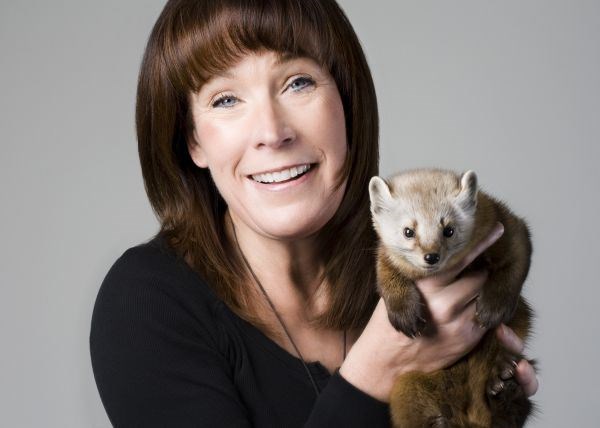What is now a fully established animal rehabilitation association with over ten separate locations throughout Canada, and a main branch in Seaforth, Nova Scotia, Hope For Wildlife began with the simplest of acts, one that would, in today’s vast society, normally have gone unnoticed. Hope Swinimer, founder of Hope For Wildlife rehabilitated her first patient, a robin that had been attacked by a cat, in 1995 when she was the manager of the Dartmouth Veterinary Hospital. Because nobody else at the hospital knew what to do with the robin, Hope offered to take it to her home in Eastern Passage and cared for it by looking up how to care for wildlife and carefully followed the instructions she had found. As Hope’s knowledge began to grow, she received more and more calls from staff about orphaned and injured animals. Later, with the help of her good friend Lisa Butcher, Hope created a makeshift rehabilitation clinic in her own home and healed over forty animals in just her first year.
 |
| Hope Swinimer with a pine martin (http://tinyurl.com/42m8qpo) |
In 1996, the Department of Natural Resources’ attention was drawn to Hope’s efforts, however they had to inform her that she required a permit if she was to continue with her actions, but this permit did not exist in Nova Scotia at the time. Hope went to see a biologist at DNR named Doug Archibald to work out a way for her to continue rehabilitating animals. He figured out a way for Hope to legitimize her work, but it was clear that the property she had would not be large enough if she was serious about helping wildlife.
After moving to Winnie’s Way in Seaforth Nova Scotia, Hope was finally given her rehab permit. Afterwards, the Eastern Shore Wildlife Rescue and Rehabilitation Clinic (or ESWRRC), became the very first privately owned rehab center in Nova Scotia. Hope devoted a large portion of her time to giving public presentations on wildlife protection. Shortly after, Hope held a volunteer drive in 1998, and thirty people from Seaforth volunteered. Out of those thirty, four became regular volunteers. Around then, Hope received an average of two hundred animals per year. Despite being well equipped, the amount of animals that the ESWRRC was receiving quickly outgrew the space on the property, so Hope searched long and hard for a larger property, and eventually found space on the outskirts of Seaforth. Shortly after, in 2006, the ESWRRC officially became the Hope For Wildlife association.
In 2006, the association went through many other changes, one being that they soon started having to accept white-tailed deer when the Shubenacadie Wildlife Park wouldn’t allow the rehabilitated deer to share the same environment as the others for fear that the behavior of the rehabilitated deer would differ from that of the others, possibly causing fights. Hope For Wildlife made a half acre enclosure for the deer alone, which eventually lead to the creation of a new nursery in 2007. A one hundred foot cage was also built for the rehabilitation of birds of prey, and a Learning Center was created to welcome visitors and help assist in the learning of wildlife rehabilitation.
Fifteen years later, with over seventy-five volunteers and an average of one thousand five hundred animals rehabilitated per year, the Hope For Wildlife association displays tireless dedication and motivation towards rehabilitating wild animals. Hope’s care for wildlife and her small, loving action in 1995 kick-started one of the largest wildlife rehabilitation clinics in Canada, and set a perfect example for others. Hope For Wildlife, and Hope herself, are true heroes.
Page created on 10/21/2011 12:00:00 AM
Last edited 8/21/2018 9:06:41 PM
Unknown, Author . "About us, Our Story." [Online] Available http://www.hopeforwildlife.org/pages/about_us/our_story. 2010.
